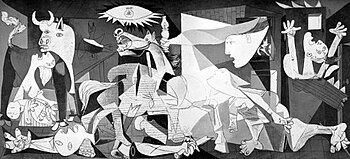"ROME (Reuters) - Art restorers have discovered the figure of a devil hidden in the clouds of one of the most famous frescos by Giotto in the Basilica of St Francis in Assisi, church officials said on Saturday.
The devil was hidden in the details of clouds at the top of fresco number 20 in the cycle of the scenes in the life and death of St Francis painted by Giotto in the 13th century.
The figure is difficult to see from the floor of the basilica but emerges clearly in close-up photography.
Sergio Fusetti, the chief restorer of the basilica, said Giotto probably never wanted the image of the devil to be a main part of the fresco and may have painted it in among the clouds "to have a bit of fun."
Tweet
Devil found in detail of Giotto fresco in Italy's Assisi - Yahoo! News:















